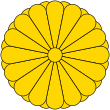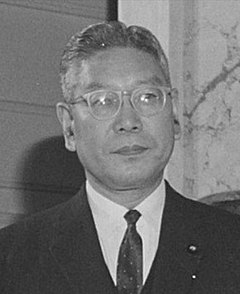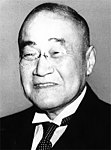
The politics of Japan are conducted in a framework of a multi-party bicameral parliamentary representative democratic constitutional monarchy whereby the Emperor is the ceremonial head of state and the Prime Minister is the head of government and the head of the Cabinet, which directs the executive branch.

The Prime Minister of Japan is the head of government of Japan. The Prime Minister is appointed by the Emperor of Japan after being designated by the National Diet and must enjoy the confidence of the House of Representatives to remain in office. He is the chairman of the Cabinet and appoints and dismisses the other Ministers of State. The literal translation of the Japanese name for the office is Minister for the Comprehensive Administration of the Cabinet.

The Prime Minister of Israel is the head of government and chief executive of Israel.

Junichiro Koizumi is a Japanese politician, who was the 56th Prime Minister of Japan from 2001 to 2006. He retired from politics when his term in parliament ended in 2009, and is the sixth longest serving PM in Japanese history.

Count Kiyoura Keigo was a Japanese politician. He was the 23rd Prime Minister of Japan from 7 January 1924 to 11 June 1924, during the period which historians have called the "Taishō Democracy".
The Cabinet of Japan is the executive branch of the government of Japan. It consists of the Prime Minister, who is appointed by the Emperor after being designated by the National Diet, and up to nineteen other members, called Ministers of State. The Prime Minister is designated by the Diet, and the remaining ministers are appointed and dismissed by the Prime Minister. The Cabinet is collectively responsible to the Diet and must resign if a motion of no confidence is adopted by the Diet.
The Japanese political process has three types of elections: general elections to the House of Representatives held every four years, elections to the House of Councillors held every three years to choose one-half of its members, and local elections held every four years for offices in prefectures, cities, and villages. Elections are supervised by election committees at each administrative level under the general direction of the Central Election Administration Committee, an attached organization to the Ministry of Internal Affairs and Communications (MIC). The minimum voting age in Japan's non-compulsory electoral system was reduced from twenty to eighteen years in June 2016. Voters must satisfy a three-month residency requirement before being allowed to cast a ballot.

Winston Churchill formed the third Churchill ministry in the United Kingdom after the 1951 general election. He was reappointed as Prime Minister of the United Kingdom by King George VI and oversaw the accession of Queen Elizabeth II in 1952 and her coronation.

Shinzō Abe is a Japanese politician serving as Prime Minister of Japan and Leader of the Liberal Democratic Party (LDP) since 2012. He previously served as Prime Minister from 2006 to 2007 and Chief Cabinet Secretary from 2005 to 2006. In 2019, Abe succeeded Shigeru Yoshida as the second-longest serving Prime Minister in post-war Japan and the fourth-longest serving PM in Japanese history.

Yasuo Fukuda was the 58th Prime Minister of Japan, serving from 2007 to 2008. He was previously the longest-serving Chief Cabinet Secretary in Japanese history, serving for three and a half years (2000–2004) under Prime Ministers Yoshirō Mori and Junichiro Koizumi.
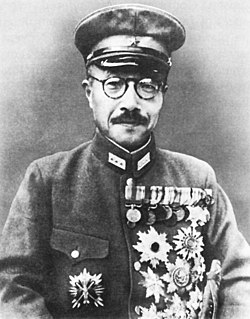
The 21st General Election of Japan of the House of Representatives took place in Japan on April 30, 1942. It was the only election in Japan during the Pacific theater of World War II. At this time, the lower house no longer had any significant executive and legislative power, and power had increasingly gone to the military dictatorship since the "Manchurian Incident", the invasion of Manchuria by the Imperial Army without regard to the cabinet in 1931. Since 1932 when Admiral Viscount Saitō Makoto was appointed prime minister with the first so-called "national unity cabinet", few members of the political parties in the House of Representatives had any significant role in government.

Sheikh Jaber Al-Mubarak Al-Hamad Al-Sabah is a Kuwaiti politician and the Prime Minister of Kuwait since 2011. Previously he served as Minister of Defense as well as Deputy Prime Minister.
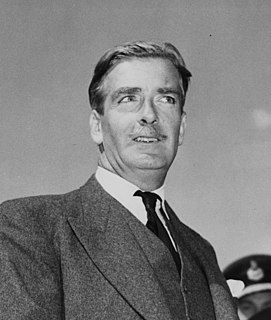
Following the resignation of Winston Churchill in April 1955, Anthony Eden, then-Foreign Secretary, took over as Leader of the Conservative Party, and thus became Prime Minister of the United Kingdom. Upon assuming office, Eden asked Queen Elizabeth II to dissolve parliament and called a general election for May 1955. After winning the general election with a majority of 60 seats in the House of Commons, Eden governed until his resignation on 10 January 1957.
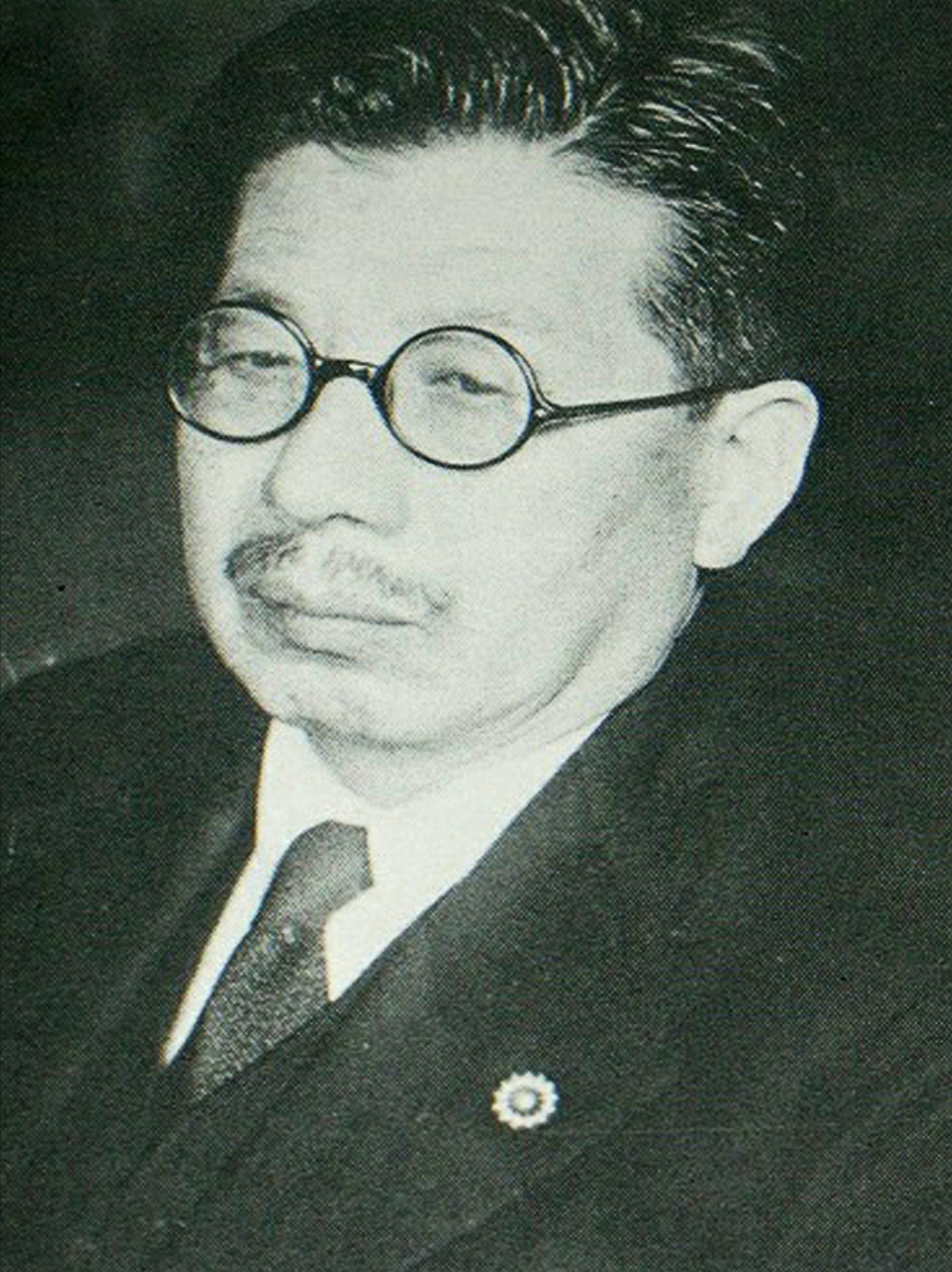
The 23rd general elections of members of the House of Representatives, the lower house of the National Diet of Japan, were held on 25 April 1947. The Japan Socialist Party won 144 of the 466 seats, making it the largest party in the House of Representatives following the election. Voter turnout was 67.9%. It was the last election technically held under the Meiji Constitution in preparation for the current Constitution of Japan which became effective several days later on 3 May 1947. The upper house of the Diet was also elected by the people under the new constitution, the first ordinary election of members of the House of Councillors had been held five days before.
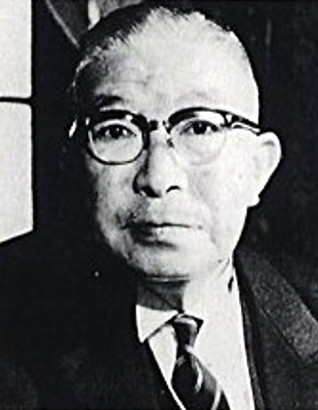
General elections were held in Japan on 10 April 1946, the first after World War II. Voters had one, two or three votes, depending on how many MPs were elected from their constituency. The result was a victory for the Liberal Party, which won 148 of the 464 seats. Voter turnout was 72.1 percent.

The government of Japan is a constitutional monarchy in which the power of the Emperor is limited and is relegated primarily to ceremonial duties. As in many other states, the Government is divided into three branches: the Legislative branch, the Executive branch, and the Judicial branch.
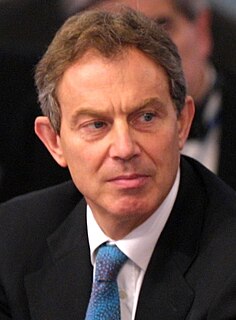
Tony Blair originally formed the Blair ministry in May 1997 after being invited by Queen Elizabeth II to form a new government following the resignation of the previous Prime Minister, John Major of the Conservative Party, as a result of the Labour Party's landslide victory at the 1997 general election. He would serve as the Prime Minister for three successive ministries and parliamentary terms until his resignation on 27 June 2007. His Cabinet was reshuffled for each new parliament along with a few minor changes during each term.

The Murayama Cabinet governed Japan under the leadership of Prime Minister Tomiichi Murayama from 1994 until a 1995 Cabinet Reshuffle. Murayama was elected prime minister by the National Diet on 29 June 1994 after the threat of a no-confidence vote had brought down the previous minority Hata Cabinet. Murayama's and his cabinet's formal investiture by the Emperor took place one day later.

The 47th general election of members of the House of Representatives of Japan was held on 14 December 2014. Voting took place in all Representatives constituencies of Japan including proportional blocks, in order to appoint Members of Diet to seats in the House of Representatives, the lower house of the National Diet of Japan. As the cabinet resigns in the first post-election Diet session after a general House of Representatives election, the lower house election also led to a new designation election of the prime minister in the Diet, and the appointment of a new cabinet. The turnout in this election is the lowest in Japanese history.
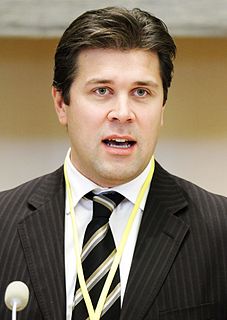
The Cabinet of Bjarni Benediktsson was formed on 11 January 2017, following the 2016 parliamentary election. The cabinet was led by Bjarni Benediktsson of the Independence Party, who served as Prime Minister of Iceland.
